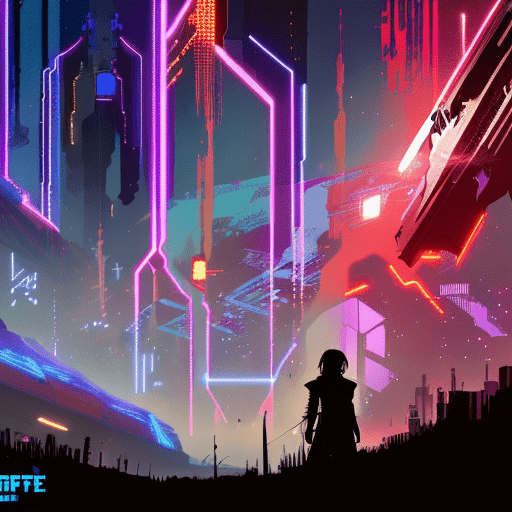Summary:
In the dystopian novel “Ready Player One” by Ernest Cline, teenager Wade Watts embarks on a thrilling virtual reality adventure in the year 2045, where he competes against other players to find the hidden Easter egg left behind by the late James Halliday, the creator of the virtual world called the OASIS. Wade’s journey takes him through a nostalgic trip down 1980s pop culture, as he faces challenges, forms alliances, and discovers the importance of friendship and real-life connections.
The OASIS and the Hunt for the Easter Egg
Set in a future where the real world is plagued by poverty and environmental decay, the OASIS offers an escape for people like Wade. This virtual reality universe, created by James Halliday, allows users to live out their fantasies and interact with others. When Halliday dies, he leaves behind a challenge for OASIS users: find three hidden keys and unlock the ultimate Easter egg, which grants the finder full control of the OASIS and Halliday’s immense fortune. Wade, known by his avatar name Parzival, becomes one of the “gunters” (egg hunters) determined to win the prize.
The Nostalgic Journey through 1980s Pop Culture
To solve the clues left by Halliday, Wade immerses himself in 1980s pop culture, which was Halliday’s obsession. From classic video games like Pac-Man and Joust to movies like “WarGames” and “Back to the Future,” Wade becomes an expert in all things 80s. This knowledge not only helps him decipher the clues but also earns him the respect and admiration of other gunters. However, Wade soon realizes that the hunt is not just about knowing trivia; it requires understanding Halliday’s life and mindset.
The Power of Friendship and Real-Life Connections
As Wade progresses in the hunt, he forms alliances with other gunters, including Art3mis, Aech, and Shoto. Together, they navigate the challenges and dangers of the OASIS, while also forming deep bonds of friendship. Through these connections, Wade learns the importance of trust, teamwork, and relying on others. He realizes that the virtual world, while exciting and immersive, cannot replace genuine human relationships and the experiences of the real world.
Wade’s journey is not without obstacles. He faces the IOI (Innovative Online Industries), a powerful corporation that seeks to control the OASIS for profit. Led by the ruthless Nolan Sorrento, the IOI employs an army of players known as “Sixers” to find the Easter egg. Wade and his friends must outsmart the IOI, navigate treacherous virtual challenges, and protect themselves from real-life threats.
In the climax of the story, Wade and his allies discover the final key and enter the Third Gate, where they face a series of challenges that test their knowledge, skills, and determination. Ultimately, Wade emerges victorious, finding the Easter egg and inheriting Halliday’s fortune and control over the OASIS. However, he realizes that the OASIS should be a place for everyone, not just the privileged few, and makes the decision to share the keys to the OASIS with the world.
Key Takeaways:
- The power of nostalgia and its ability to bring people together.
- The importance of real-life connections and friendships.
- The dangers of allowing corporations to control virtual worlds.
- The value of teamwork and relying on others.
- The significance of sharing resources and opportunities for the greater good.
“I created the OASIS because I never felt at home in the real world. I didn’t know how to connect with the people there. I was afraid, for all of my life, right up until I knew it was ending. That was when I realized, as terrifying and painful as reality can be, it’s also the only place where you can find true happiness. Because reality is real.”
In “Ready Player One,” Ernest Cline takes readers on an exciting adventure through a virtual world filled with 1980s nostalgia. Through Wade’s journey, the novel explores themes of friendship, the power of nostalgia, the dangers of corporate control, and the importance of real-life connections. It reminds us that while virtual reality can be thrilling, true happiness and fulfillment are found in the real world and in genuine human connections.












